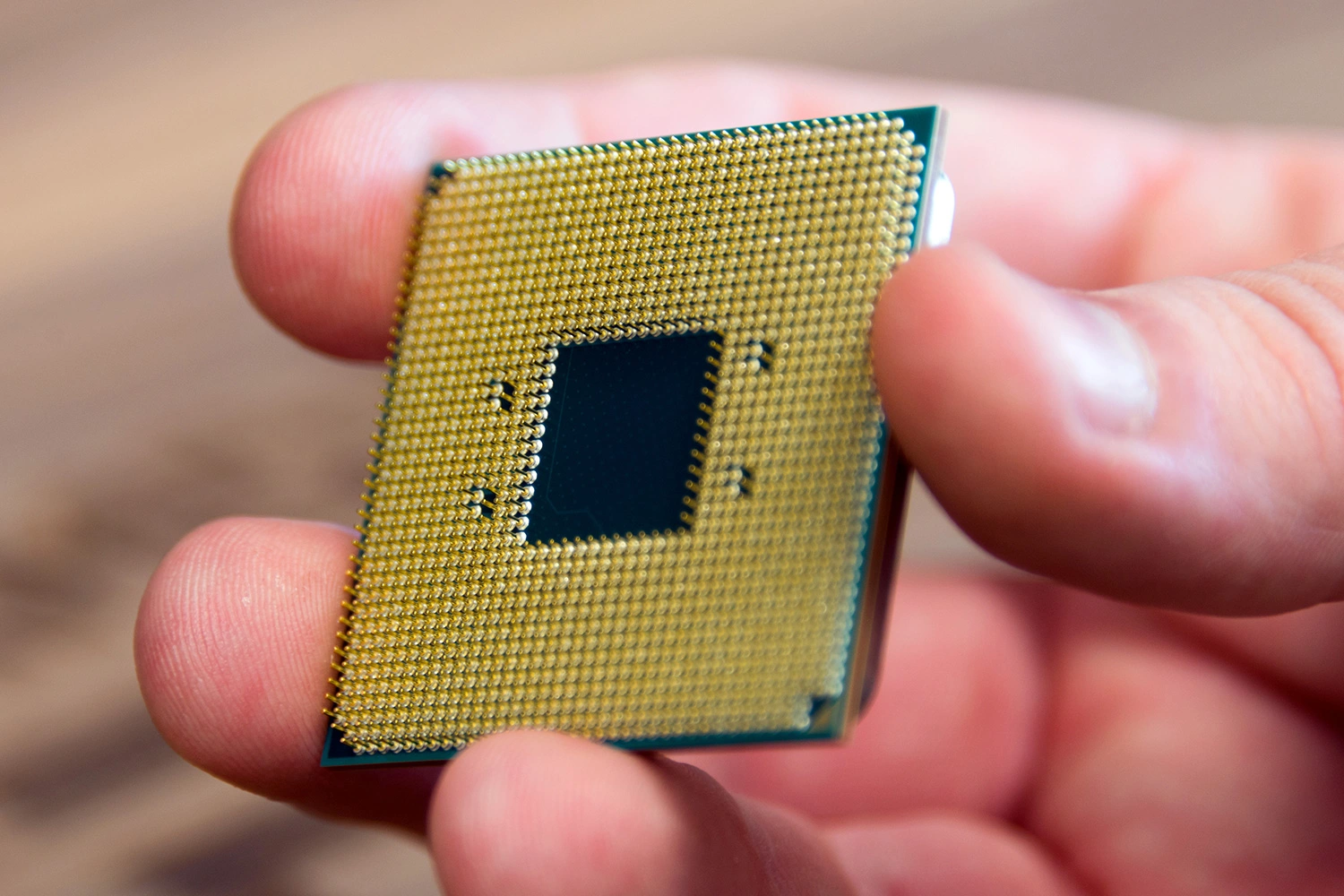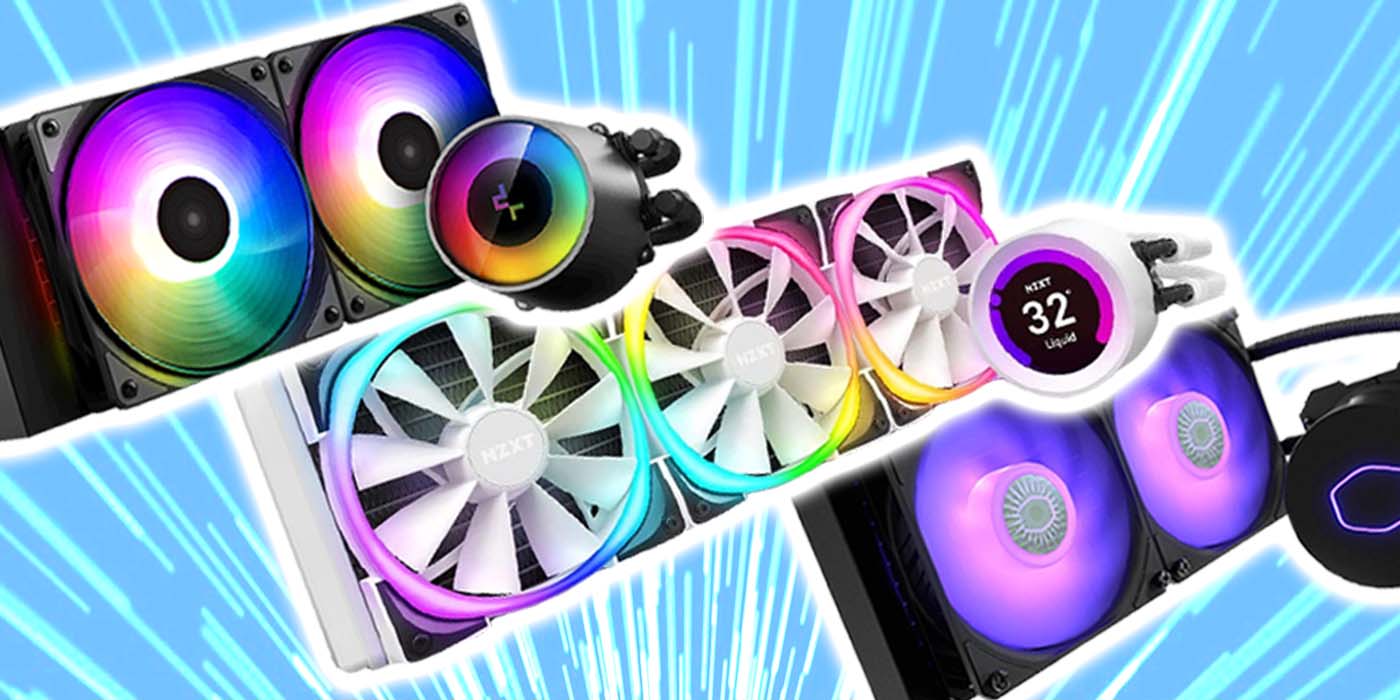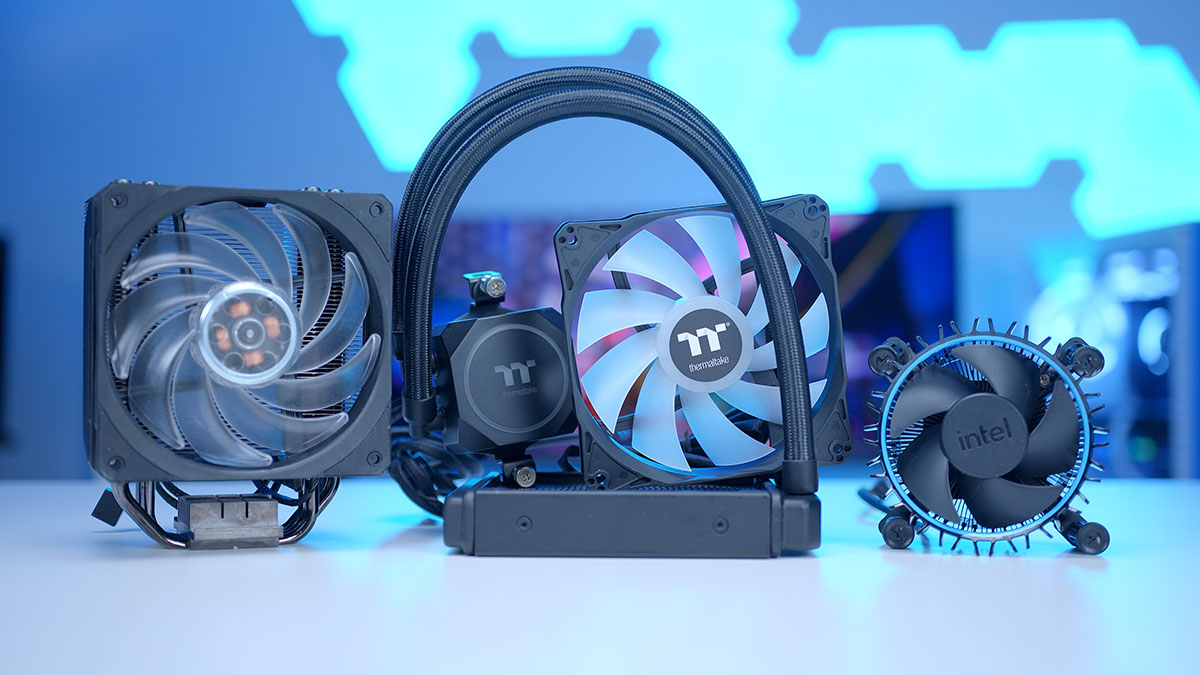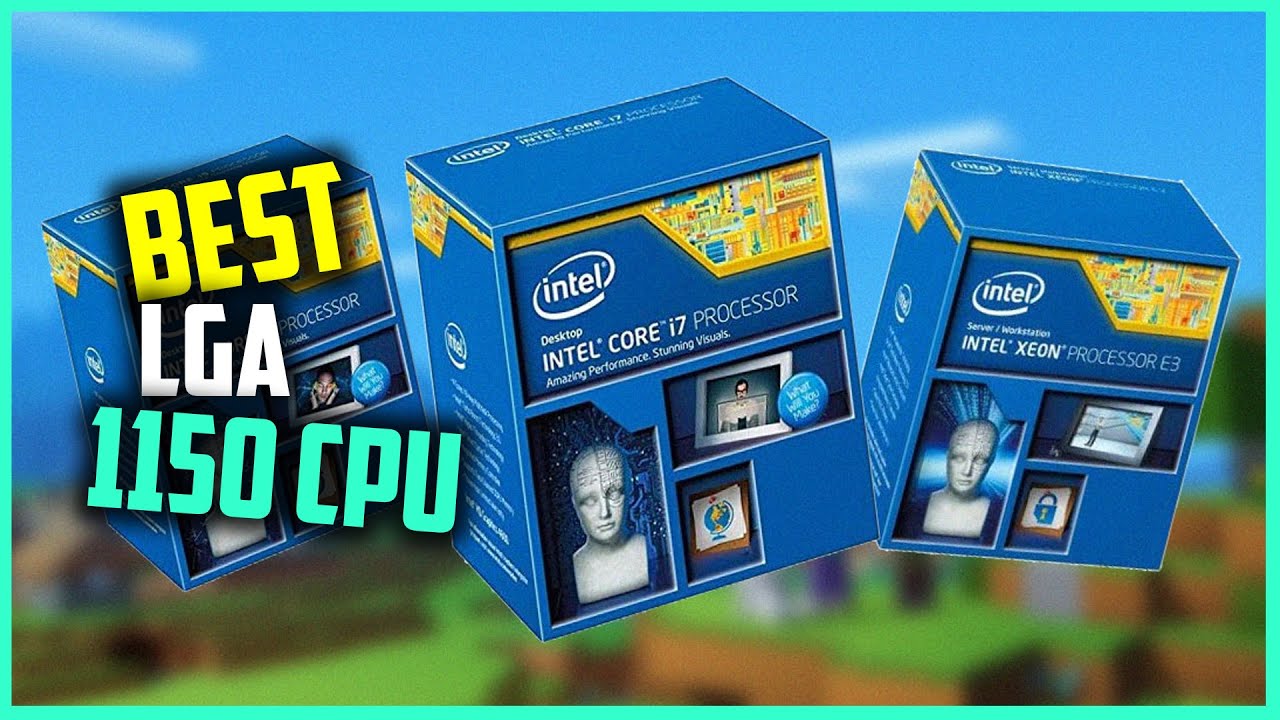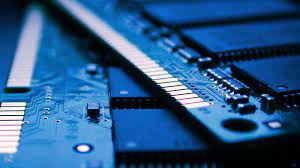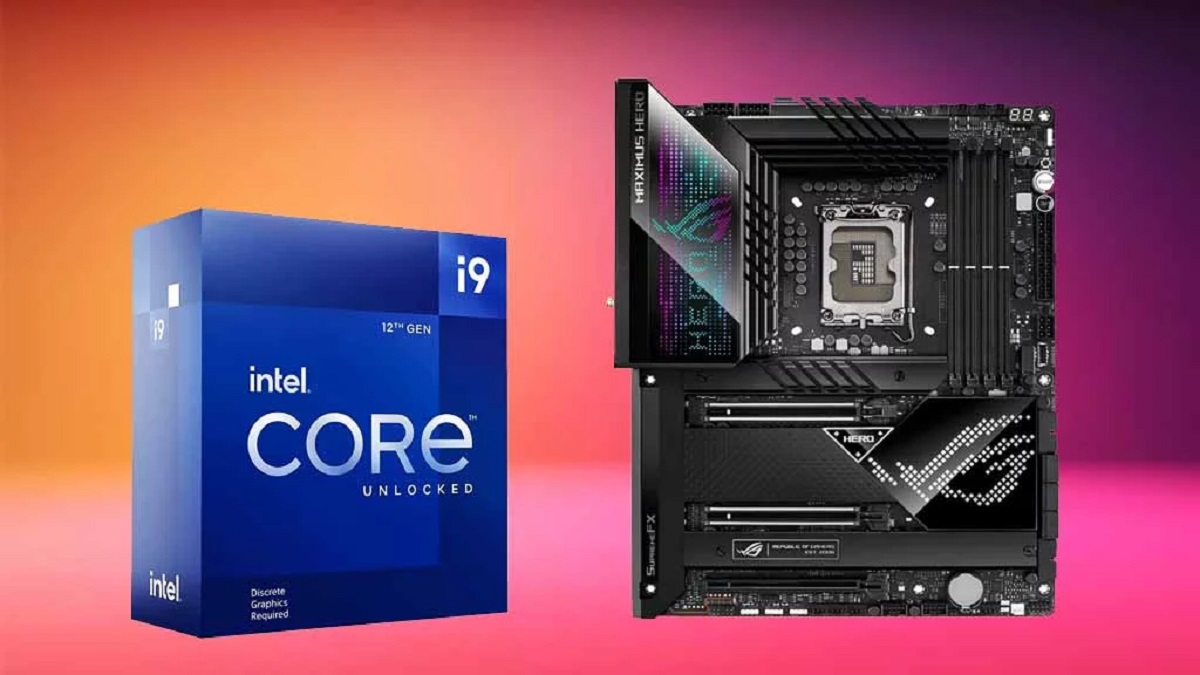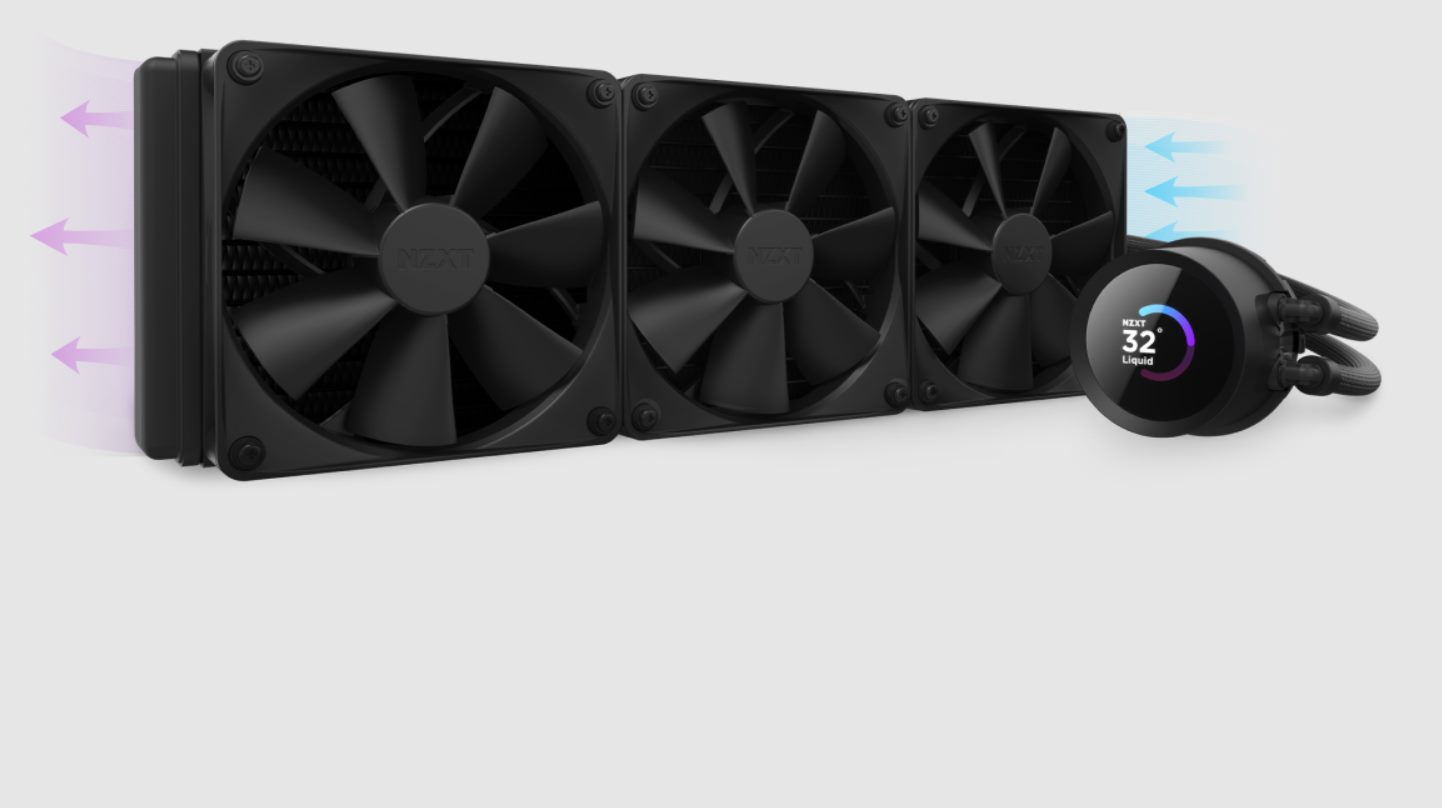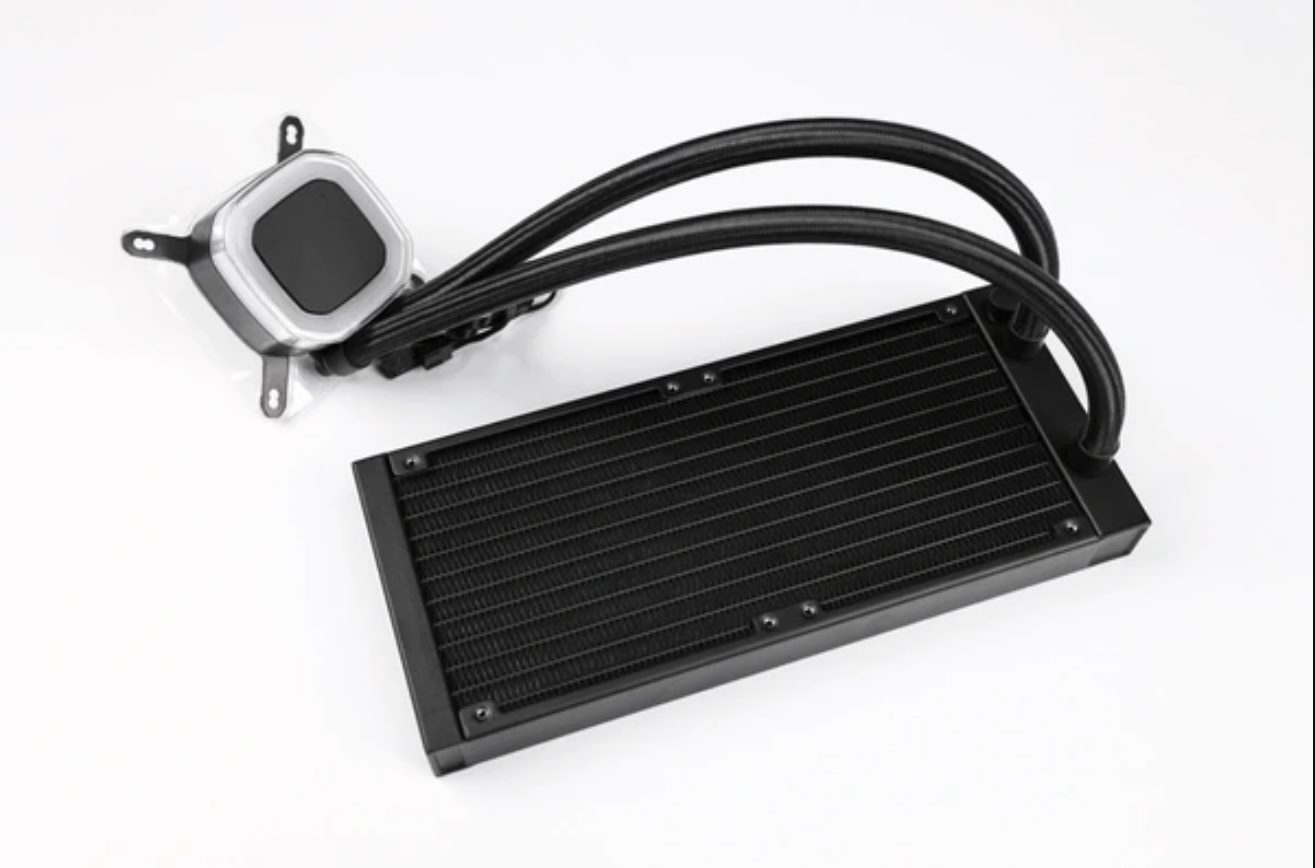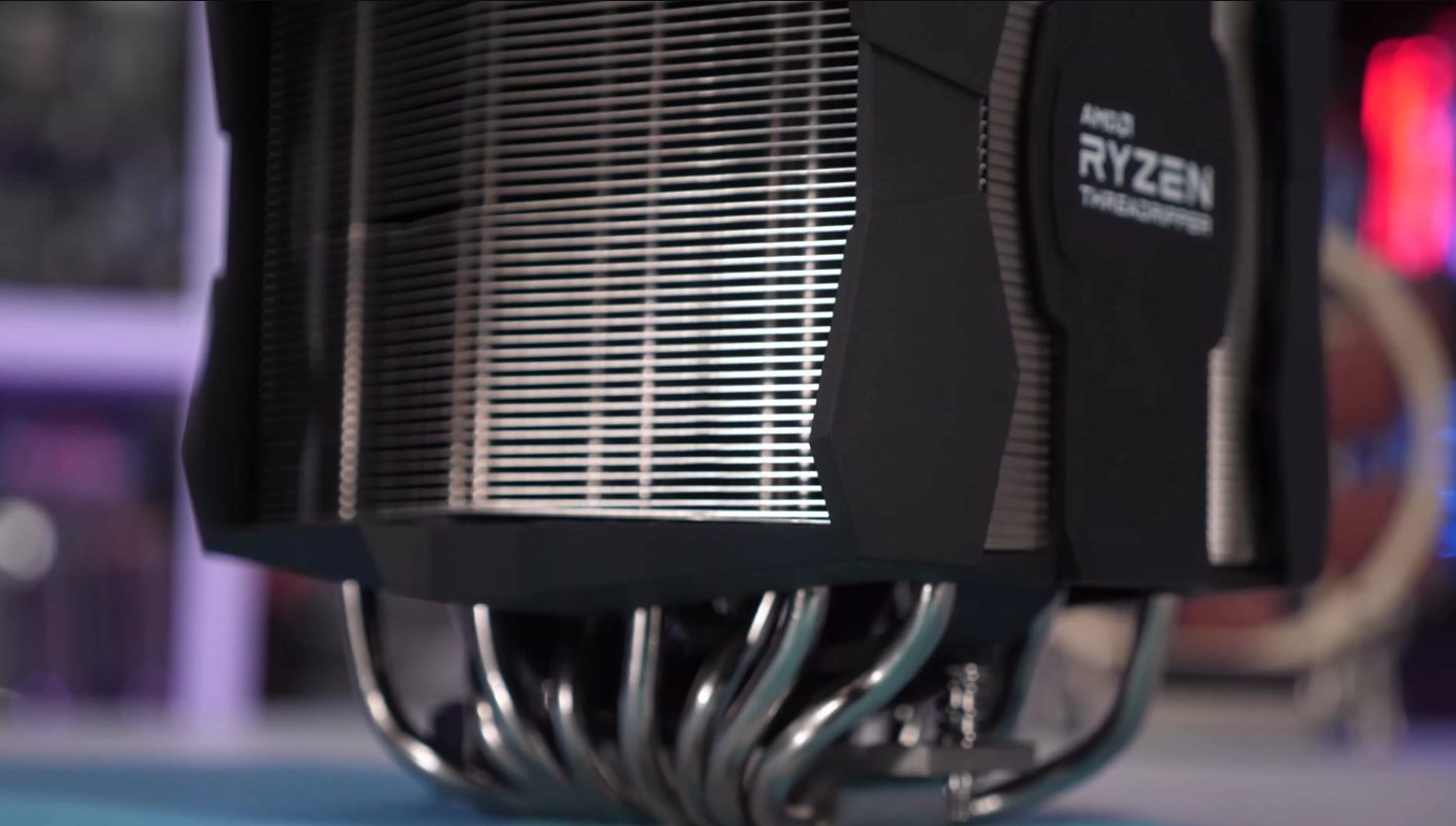Introduction
The CPU, or Central Processing Unit, is one of the most crucial components of a computer system. It serves as the brain of the computer, carrying out instructions and performing calculations that allow the computer to run smoothly. Without a CPU, computers would be unable to process information and execute tasks.
Understanding the role and function of the CPU is essential for anyone interested in computers and technology. Whether you’re a seasoned IT professional or a curious computer enthusiast, this article will provide you with a comprehensive overview of what the CPU is, how it works, and its significance in computer terms.
Throughout this article, we will delve into the details of how the CPU operates, its components, and different types of CPUs available in the market. We will also discuss the importance of CPU performance and how it can impact your computer’s overall speed and efficiency.
As technology continues to advance at a rapid pace, it’s crucial to stay up-to-date with the latest developments in CPU technology and choose the right CPU for your specific needs. By the end of this article, you will have a solid understanding of CPUs and be better equipped to make informed decisions when it comes to purchasing or upgrading your computer’s central processing unit.
Now, let’s jump into the exciting world of CPUs and explore what makes them such a vital component in computer systems.
Definition of CPU
The Central Processing Unit, commonly known as the CPU, is the primary component of a computer system responsible for executing and carrying out instructions. It serves as the brain of the computer, performing all the necessary calculations and processing tasks that enable the computer to function effectively.
The CPU is essentially a microprocessor made up of millions, or even billions, of transistors and electronic circuits. These transistors work together to perform arithmetic, logical, control, and input/output operations based on the instructions provided by computer programs.
The primary function of the CPU is to fetch instructions from the computer’s memory, decode them into a form the CPU can understand, and execute them accordingly. It operates at a predetermined clock speed, measured in megahertz (MHz) or gigahertz (GHz), indicating the number of cycles it can complete per second, and determines the overall speed and performance of the computer system.
The CPU’s performance is measured by its processing power, which is mainly determined by factors such as clock speed, the number of cores, cache memory size, and architecture. A faster CPU with more cores and a larger cache memory can handle more instructions simultaneously, resulting in improved multitasking capabilities and faster execution of tasks.
Over the years, CPU technology has evolved significantly, with advancements in manufacturing processes and chip design. As a result, CPUs have become smaller, more powerful, and energy-efficient, enabling them to handle increasingly complex applications and demanding tasks.
It’s important to note that while the CPU plays a vital role in a computer system’s performance, it works in conjunction with other hardware components such as the memory, storage devices, and graphics processing unit (GPU) to deliver optimal functionality and user experience.
In the next section, we will explore how the CPU works and the various components that make up this critical computing element.
How Does a CPU Work?
Understanding how a CPU works is key to comprehending its role in a computer system. The CPU performs a series of operations based on instructions it receives from computer programs, allowing the system to carry out a wide range of tasks.
The CPU follows a basic sequence of steps known as the instruction cycle. This cycle consists of four stages: fetch, decode, execute, and store. Let’s take a closer look at each stage:
- Fetch: The CPU retrieves the next instruction from the computer’s memory. It fetches the instruction from the memory address pointed to by the program counter, a register that keeps track of the location of the next instruction.
- Decode: The CPU decodes the fetched instruction to determine the operation it needs to perform. It breaks down the instruction into its various components, such as the opcode (operation code) and any associated operands.
- Execute: The CPU carries out the operation specified by the decoded instruction. This stage involves performing various calculations or logical operations, accessing and manipulating data, and updating the relevant registers.
- Store: After executing the instruction, the CPU may need to store the result in memory or update the appropriate register. This ensures that any changes made during the execution of the instruction are saved for future use.
The CPU repeats this instruction cycle continuously, fetching, decoding, executing, and storing instructions until the program is complete. This seamless process allows the CPU to perform numerous operations per second, enabling the computer to perform complex tasks efficiently.
Modern CPUs often feature multiple cores, which are essentially individual processing units within a single physical CPU chip. Each core can independently execute instructions, allowing for parallel processing and improved performance. The concept of multi-threading, where each core handles multiple threads simultaneously, further enhances the CPU’s efficiency.
In addition to the core(s), CPUs have various other components, including cache memory. Cache memory is a small, high-speed memory located within the CPU that stores frequently accessed instructions and data. It helps reduce the time it takes to fetch instructions from the slower system memory, improving overall CPU performance.
Now that we’ve explored the fundamental operation of a CPU, let’s take a closer look at the different components that make up this vital computing element.
Components of a CPU
A CPU is a complex piece of hardware composed of several key components working together to carry out computations and execute instructions. Understanding these components is essential in grasping how a CPU functions and how it influences a computer’s performance.
Here are the primary components found within a CPU:
- Arithmetic Logic Unit (ALU): The ALU is responsible for performing arithmetic and logical operations. It carries out calculations such as addition, subtraction, multiplication, and division, as well as logical operations like AND, OR, and NOT.
- Control Unit (CU): The Control Unit coordinates the operations of the CPU. It fetches instructions from memory, decodes them, and directs the ALU and other components to execute them. It also manages the flow of data within the CPU and controls external devices.
- Registers: Registers are small, fast storage units within the CPU that hold temporary data and instructions during processing. These include the program counter, which keeps track of the location of the next instruction, and general-purpose registers used for storing intermediate results.
- Clock: The clock is a crucial component of a CPU. It provides a steady and synchronized rhythm, regulating the timing of operations within the CPU. Each tick of the clock represents a single operation cycle, ensuring that components work in harmony.
- Cache Memory: Cache memory is a small, ultra-fast memory located within the CPU. It stores frequently accessed instructions and data to reduce the time it takes to fetch information from the slower system memory. Having a larger cache can significantly improve CPU performance.
- Bus Interface: The bus interface connects the CPU to other components of the computer system, allowing for data transfer. It manages the flow of data between the CPU, memory, and other peripherals, facilitating communication and synchronization.
These components work together seamlessly, enabling the CPU to fetch, execute, and store instructions efficiently. The ALU performs calculations, the Control Unit manages operations, registers store temporary data, the clock provides synchronization, cache memory enhances performance, and the bus interface facilitates communication.
It’s worth noting that different CPU architectures may have additional components or variations to optimize performance for specific tasks or applications.
Next, let’s explore the difference between CPUs and GPUs and understand their respective roles in computing.
CPUs vs. GPUs
When it comes to computing, you may have come across the terms CPU and GPU. While both are essential components in modern computer systems, they serve different purposes and have distinct architectures designed for specific tasks.
A CPU, or Central Processing Unit, is a general-purpose processor that handles a wide range of tasks. It is responsible for executing instructions, performing calculations, managing data, and controlling the overall operation of a computer system. CPUs excel at handling single-threaded tasks that require complex calculations, such as running applications, managing the operating system, and executing sequential tasks.
On the other hand, a GPU, or Graphics Processing Unit, is a specialized processor primarily designed for rendering and manipulating graphics and images. GPUs are highly parallel processors, meaning they excel at performing multiple calculations simultaneously. This parallel processing capability makes GPUs ideal for tasks that require heavy graphical computations, such as rendering video games, editing videos, and performing scientific simulations.
The fundamental difference between CPUs and GPUs lies in their architecture and number of cores. CPUs typically have fewer cores, ranging from two to eight, while GPUs boast numerous cores, exceeding thousands in high-end models. This disparity in core count allows GPUs to handle parallel processing tasks more efficiently, making them highly effective for graphics and computationally intensive operations.
While CPUs and GPUs have distinct roles, they often work in tandem to maximize system performance. CPUs handle general-purpose computations, manage system resources, and communicate with other components, including the GPU. GPUs, in turn, offload graphics-related computations from the CPU, freeing up its resources to handle other tasks.
It’s important to note that recent advancements in GPU technology have opened up new opportunities for utilizing GPUs for non-graphics related tasks. This concept, known as General-Purpose GPU (GPGPU) computing, leverages the parallel processing power of GPUs to accelerate a wide range of applications, including machine learning, data analysis, and scientific simulations.
By understanding the differences between CPUs and GPUs, you can make better-informed decisions when selecting computer hardware that suits your specific needs. The next section will delve into the importance of CPU performance and how it impacts overall computer efficiency.
CPU Performance
CPU performance plays a critical role in determining the overall speed and efficiency of a computer system. It directly affects how quickly tasks are executed, applications are loaded, and data is processed. Therefore, understanding the factors that contribute to CPU performance is essential when building or upgrading a computer.
The performance of a CPU is influenced by several factors, including:
- Clock Speed: The clock speed, measured in megahertz (MHz) or gigahertz (GHz), determines the number of cycles a CPU can complete per second. A higher clock speed generally results in faster processing, although other factors can impact overall performance.
- Number of Cores: CPUs can have single or multiple cores. Having more cores allows for parallel processing, enabling the CPU to handle multiple tasks simultaneously. Multi-core CPUs are particularly effective in tasks that can be divided into smaller independent tasks, such as multitasking or running resource-intensive applications.
- Cache Size: Cache memory, located within the CPU, stores frequently accessed instructions and data. A larger cache size reduces the time it takes for the CPU to retrieve information, resulting in improved performance.
- Microarchitecture: The microarchitecture refers to the design and organization of the CPU’s internal components. Different microarchitectures employ various techniques to improve performance, such as pipelining, branch prediction, and out-of-order execution.
- Instruction Set Architecture (ISA): The ISA defines the set of instructions a CPU can execute. Newer ISA versions often introduce enhancements and optimizations, allowing for faster and more efficient processing.
It’s essential to consider your computing needs when evaluating CPU performance. If you primarily engage in tasks that require extensive multitasking or require substantial processing power for applications like video editing or gaming, a CPU with a higher clock speed, multiple cores, and a larger cache would be beneficial.
However, it’s important to note that CPU performance alone doesn’t guarantee optimal system performance. The overall efficiency of a computer system also depends on other factors like memory capacity, storage speed, and the performance of other hardware components.
Now that we have explored the factors influencing CPU performance, let’s move on to the different types and architecture of CPUs to gain a deeper understanding of the options available in the market.
CPU Types and Architecture
CPU technology has evolved over the years, resulting in a variety of CPU types and architectures. Understanding the different types and their respective architectures can help you choose the right CPU for your specific needs.
There are three primary CPU types:
- x86 CPUs: x86 CPUs, developed by Intel and AMD, are the most common type of CPUs found in personal computers. They are based on the x86 architecture and are compatible with a wide range of operating systems and software applications. x86 CPUs are known for their general-purpose computing capabilities, making them suitable for various tasks, from everyday computing to gaming and multimedia editing.
- ARM CPUs: ARM (Advanced RISC Machines) CPUs are prevalent in mobile devices, such as smartphones and tablets. They are designed based on the ARM architecture, which prioritizes power efficiency and lower heat generation. ARM CPUs deliver excellent performance while consuming less power, making them ideal for portable devices with limited battery life.
- Power CPUs: Power CPUs, developed by IBM, are predominantly used in high-performance computing environments, data centers, and servers. They are designed with a focus on delivering exceptional processing power, scalability, and reliability. Power CPUs are often found in enterprise-grade systems that require superior performance for demanding workloads.
Each CPU type has its unique advantages and caters to specific market segments and applications.
In terms of architecture, CPUs can be categorized into different generations or families based on the microarchitecture they employ. Popular CPU microarchitectures include Intel’s x86-based microarchitectures like Intel Core, Intel Xeon, and AMD’s Zen architecture. Each microarchitecture introduces enhancements and improvements to boost performance, power efficiency, and overall capabilities.
When choosing a CPU, it’s important to consider factors such as your computing needs, budget, compatibility with software and hardware, and future-proofing. Researching and understanding the performance benchmarks, reviews, and specifications of different CPUs will help you make an informed decision.
Now that we’ve explored CPU types and architectures, let’s move on to discussing common CPU brands and models that are popular in the market.
Common CPU Brands and Models
When it comes to CPU brands and models, several companies dominate the market, offering a wide range of options to suit various computing needs. Let’s take a look at some of the common CPU brands and models that are highly regarded and widely used.
Intel: Intel is one of the most well-known and influential CPU manufacturers. They produce a range of CPUs for desktops, laptops, and servers. Some popular Intel CPU series include the Intel Core i3, i5, i7, and i9 for consumer-grade computers, while their Xeon series offers high-performance CPUs for workstations and servers. Intel processors are known for their robust performance, compatibility with a wide range of software, and power efficiency.
AMD: Advanced Micro Devices (AMD) is another prominent player in the CPU market. AMD’s Ryzen series has gained significant popularity for its competitive performance and affordability. The Ryzen CPUs cater to both consumer-grade and high-performance computing needs. They offer excellent multi-threaded performance and are popular among gamers, content creators, and professionals seeking powerful CPUs at affordable prices.
ARM: ARM CPUs, designed using the ARM architecture, are predominantly found in mobile devices. Companies like Apple, Qualcomm, and Samsung produce ARM-based CPUs for smartphones, tablets, and other portable devices. These processors are known for their power efficiency, which helps prolong battery life and maintain low heat generation.
When choosing a CPU, consider factors such as your computing requirements, budget, and compatibility with software and hardware. It’s also worth checking benchmark comparisons and reviews to ensure the CPU meets your specific needs.
In addition to the brands mentioned above, other manufacturers, such as IBM, produce CPUs for enterprise-grade computing and data centers. These CPUs, such as IBM’s Power series, provide exceptional performance and scalability for demanding workloads.
As technology continues to advance, CPU manufacturers introduce new models and iterations regularly. It’s recommended to stay updated with the latest releases and compare the specifications, performance, and pricing of different models to make an informed decision.
Now that we have explored common CPU brands and models, let’s move on to the next section to delve into choosing the right CPU for your computer.
Choosing the Right CPU for Your Computer
When it comes to selecting the right CPU for your computer, there are several factors to consider to ensure optimal performance and compatibility. Here are some key considerations to keep in mind:
1. Computing Needs: Determine the primary purpose of your computer. Are you a casual user who mainly uses the computer for browsing, email, and light productivity tasks? Or are you a gamer, designer, or professional who requires more processing power for resource-intensive applications? Understanding your computing needs will help you choose a CPU that aligns with your requirements.
2. Budget: Set a budget for your CPU purchase. CPUs vary in price depending on their performance, features, and brand. Consider how much you’re willing to invest in a CPU and choose a model that offers a balance between performance and affordability.
3. Compatibility: Ensure that the CPU is compatible with your motherboard and other hardware components. Check the socket type and chipset of your motherboard to determine which CPUs are supported. Research and consult the specifications and compatibility information provided by the CPU manufacturer to avoid any compatibility issues.
4. Performance Considerations: Evaluate the performance metrics of different CPUs, such as clock speed, number of cores, cache size, and microarchitecture. Higher clock speeds and more cores generally result in faster performance, but keep in mind that not all applications benefit from multiple cores. Consider the specific requirements of the software you use to make an informed decision.
5. Future-Proofing: Consider the longevity of the CPU you choose. Look for CPUs with the latest architecture and features to ensure compatibility with future software and technology advancements. Investing in a slightly more powerful CPU may provide you with better longevity and future-proof your system.
6. Research and Reviews: Read reviews, benchmark comparisons, and user experiences to gain insights into the real-world performance and reliability of different CPU models. Look for reputable sources and consider the opinions of professionals or experienced users to make an informed decision.
By considering these factors, you can choose a CPU that meets your specific needs and budget. Remember to strike a balance between performance, compatibility, and affordability to maximize the value of your investment.
Once you have selected the CPU, you can proceed with assembling or upgrading your computer system and enjoy the improved processing power and performance that the right CPU brings.
Conclusion
The CPU, or Central Processing Unit, is undoubtedly the backbone of a computer system. As the brain of the computer, it executes instructions, performs calculations, and manages the overall operation of the system. Understanding the role and significance of the CPU is crucial for anyone interested in computers and technology.
In this article, we have explored the definition of the CPU, its components, and how it works. We have discussed the difference between CPUs and GPUs, highlighting their respective roles in computing. Additionally, we have examined CPU performance factors, such as clock speed, number of cores, and cache size, along with the importance of selecting the right CPU for your computer based on your specific needs and budget.
Furthermore, we have touched upon common CPU brands and models, including Intel, AMD, and ARM, and emphasized the importance of researching and comparing CPU specifications and performance in order to make an informed decision.
Choosing the right CPU involves considering factors like computing needs, budget, compatibility, and performance considerations. It’s essential to strike a balance between performance and affordability, as well as ensuring future-proofing to support upcoming software and technology advancements.
Ultimately, selecting the right CPU enhances the overall speed, efficiency, and capabilities of your computer system. Whether you’re a casual user, a gamer, or a professional, understanding the CPU empowers you to make informed decisions and maximize the potential of your computer for optimal performance.
With a solid understanding of CPUs, their components, and various factors influencing their performance, you can confidently navigate the ever-evolving landscape of computer technology and build or upgrade a system that meets your specific computing requirements.







